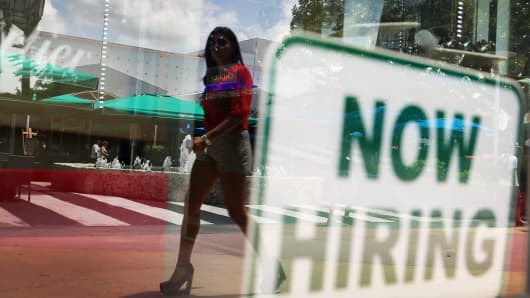The national unemployment rate remained at 4.9 percent in August, the Labor Department reported Friday. But relying on that one headline number as an indicator of the economy's direction leaves out a lot of important information.
Each month on jobs day, the Bureau of Labor Statistics releases a ton of data, each point of which provides a unique perspective on the nation's employment situation. Most economists look past the official unemployment rate — that 4.9 percent figure, also know as the "U-3" number — to other metrics that provide their own views of the state of jobs.
One of those figures is something called the U-6 rate, which has a broader definition of what unemployment means. That figure remained unchanged in August, at 9.7 percent.



